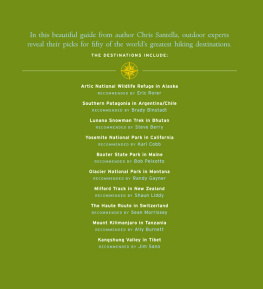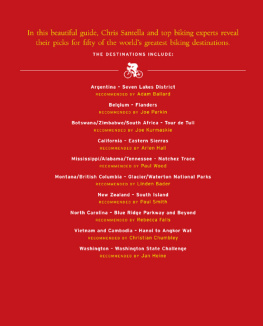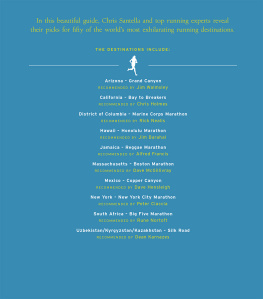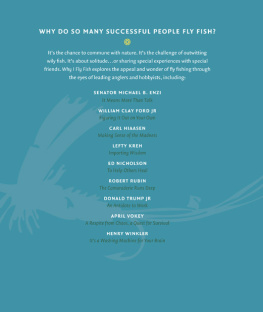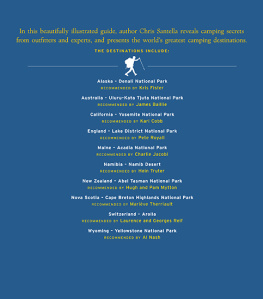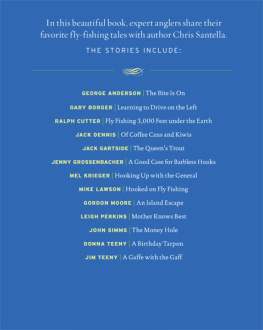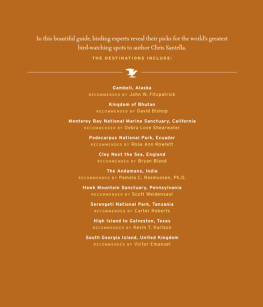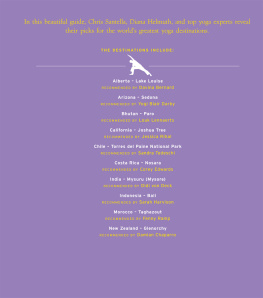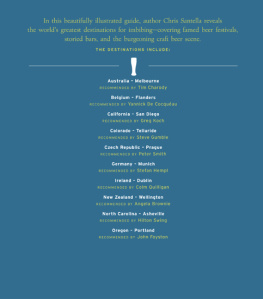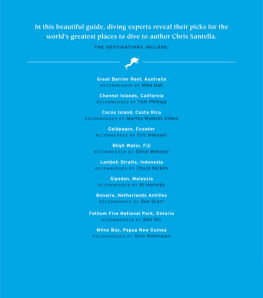Other Books by Chris Santella
Fifty Favorite Fly-Fishing Tales
Fifty Places to Dive Before You Die
Fifty Places to Fly Fish Before You Die
Fifty More Places to Fly Fish Before You Die
Fifty Places to Go Birding Before You Die
Fifty Places to Play Golf Before You Die
Fifty More Places to Play Golf Before You Die
Fifty Places to Sail Before You Die
Visit http://www.abramsbooks.com/santella
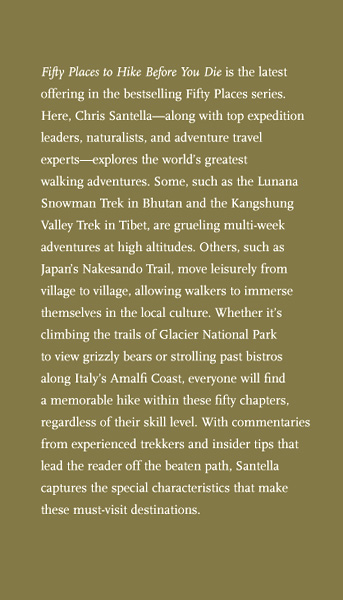


This little book is for Deidre, Cassidy Rose, and Annabel Blossom,
and for everyone whos ever been inspired to set out on a new trail.

Contents
ACKNOWLEDGMENTS
This book would not have been possible without the generous assistance of the expert outdoorspeople who shared their time and experiences to help bring these great hiking destinations to life. To these men and women, I offer the most heartfelt thanks. I want to acknowledge the efforts of my agent, Stephanie Kip Rostan, my editor, Jennifer Levesque, editorial assistant Wesley Royce, designer Anna Christian, and copyeditor Sylvia Karchmar, who helped bring the book into being. I certainly owe a debt of gratitude to the friends who introduced me, a suburban Connecticut kid, to the great outdoors, most notably Peter Marra. Lastly, I must thank my Mom and Dad for their constant encouragement, and the three ladies in my lifeDeidre, Cassidy, and Annabelfor their generosity in time and spirit that allows me to spend so much time in the great outdoors.
FOREWORD
In our company mission statement, Leon Gorman, chairman of the L.L. Bean board and long-time company president, refers to the physical and spiritual rewards that come from participation in outdoor activities. This spirit of health, personal renewal, and connection to the natural world is why I hike, and I imagine why so many of us do.
Hiking with my family has created irreplaceable memories for a lifetime, and has taught important lessons about keeping fit, and appreciating nature in both its majestic grandeur and in its smallest exquisite detail. While hiking I always want to learn more about the flora, fauna, geology, astronomy, meteorology, and cultural history of the area. We see, up close, natures enduring qualities, and witness the changes brought on by our societys evolution. I would venture most of us concerned with conservation and environmental stewardship can trace our ethic to formative hiking experiences.
Hiking is a life sport that offers challenge by choice. Hiking can be a relatively easy, accessible, and contemplative activity with a short learning curve and not requiring expensive technical gear. At the other end of the spectrum we can select a hike that provides incredible physical challenges, that immerses us in wilderness solitude, or in the exhilaration that comes from taking risks to stretch oneself. Many of us study and acquire highly technical gear to enrich our experiences or, more honestly, for the sake of being first with the latest innovation. We can dabble in hiking, be fanatics, or anything in between.
In addition to being a physical, social, and educational experience, hiking is spiritual for many. Theres nothing like ascending the shoulder of a mountain plateau to make one feel the presence of a higher power, up close and personal. Staring up at a starlit sky away from the lights of our modern world makes us feel infinitesimally small, and puts our petty endeavors and concerns into new perspective.
Theres nothing quite like the intimacy of a friendship developed while hiking. Whether splashing along a trail in a driving rain, or traversing a spectacular ridgeline at sunset, shared experiences remove barriers, and we come to know each other through silly banter, deeply personal shared reflections, and through the intimacy of shared silences.
At L.L. Bean, we quip, Theres no such thing as bad weather, only bad equipment (or bad outerwear)! Im often struck by the fact that we plan our hikes around the weather; that we check and recheck the weather, and pray for ideal hiking conditions. Ironically, our most memorable experiences, those that we most frequently share with fellow hikers even years later, are the war stories that arise from being caught out in the least ideal conditions.
Finally, hiking is as much about the journey as the destination. We are a fraternity because we take the road less traveled by. Peak baggers can have a great time toiling all day to reach a tree-covered mountaintop with no view, just for the privilege of saying theyve done it. Likewise, we think nothing of hiking eight or ten hours over rugged or barren terrain, to spend 15 minutes eating a cracker and some cheese on a remote summit in a howling wind.
Hikers have their favorite trails and favorite destinations. Like fishermen, hikers would prefer that some of their favorite hikes remain undiscovered and spared from heavy use. In Fifty Places to Hike Before You Die, Chris Santella shares his passion for great hikes, great trails, and great destinations. He has amassed a stellar list of the worlds premier destinations; each with its own special ingredients that make them must dos. From Tibet to Tanzania, from Montana to Maine, Chris has prevailed upon a colorful cast of hiking enthusiasts to let the cat out of the bag and to share their favorite and most memorable hikes.
Enjoy the special stories and places on these pages. Use the book as an inspiration and a reference. Lace up your boots and add these destinations to your life list of future trailheads. Make your own memories, and see you on the trail!
B OB P EIXOTTO
C HIEF O PERATIONS O FFICER , L.L. B EAN , I NC .

A trek to the top of Mount Kilimanjaro holds a prominent place on many hikers must do lists.
INTRODUCTION
Long before the existence of bicycles, automobiles, skateboards, and even Segways, there were feet and walking. While there are certainly faster ways to get from point A to point B, walking is still the best way to get a real sense of the surroundings you pass throughand still the only way to access some of the worlds most remote locales, be they in the mountains of Bhutan or the deserts of Namibia.
I wrote Fifty Places to Hike Before You Die for those who value life in the slower lane, those who are inspired by the quest to get off the beaten track and immerse themselves in the diverse topographies of the natural world.
What makes a destination a place you have to hike before you die? you might ask. The chance to scale a mountaintop that most only view from afar? The opportunity to spy grizzly bears, ibex, and other charismatic species? The promise of close brushes with people in remote places whose cultures have changed little in recent centuries? The answer would be all of the above, and an abundance of other criteria. One thing I knew when I began this project: I was not the person to assemble this list. So I followed a recipe that served me well in my first six Fifty Places booksto see the advice of some professionals.
Next page
